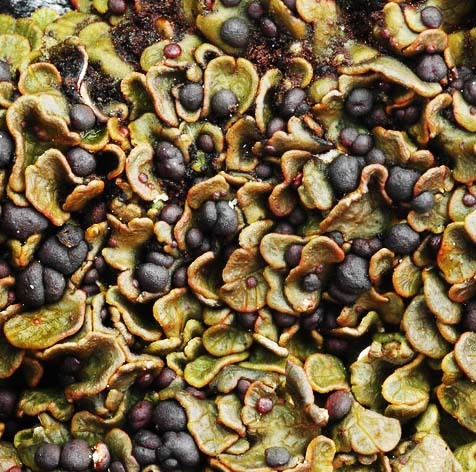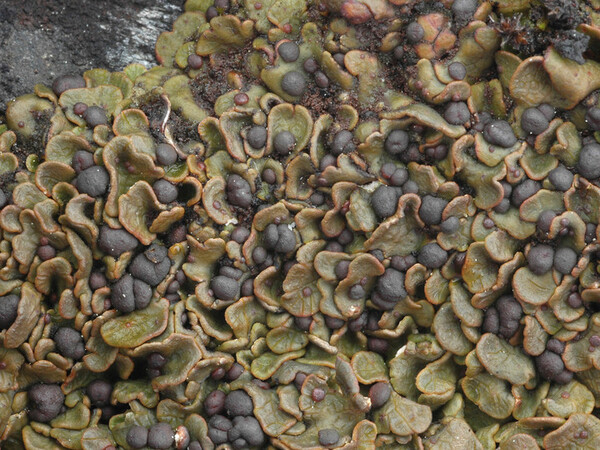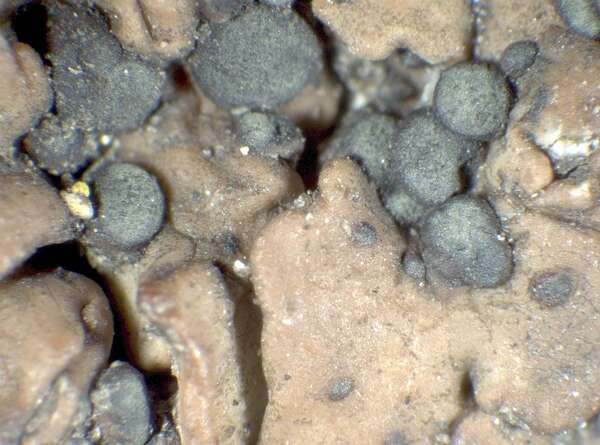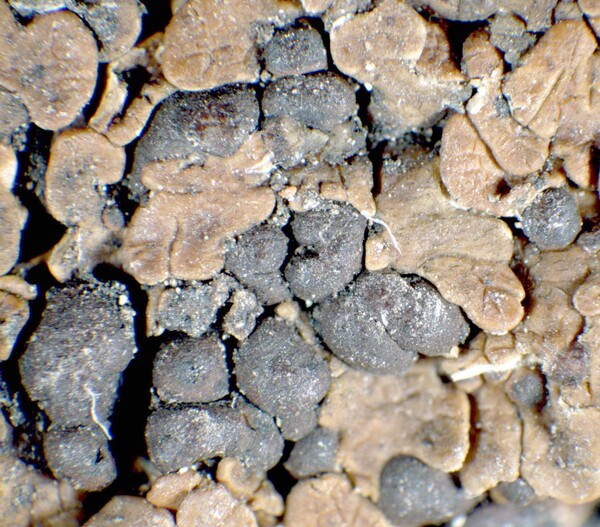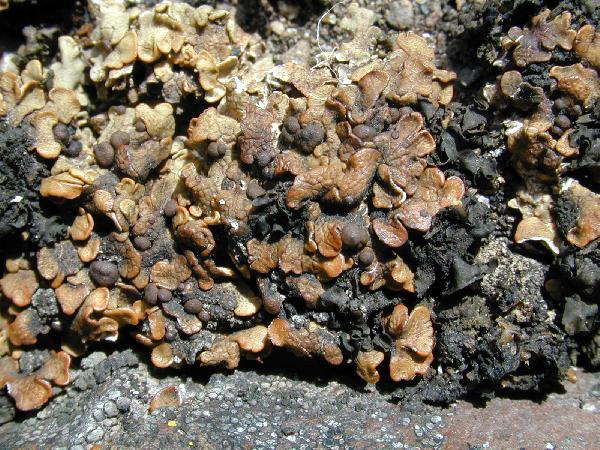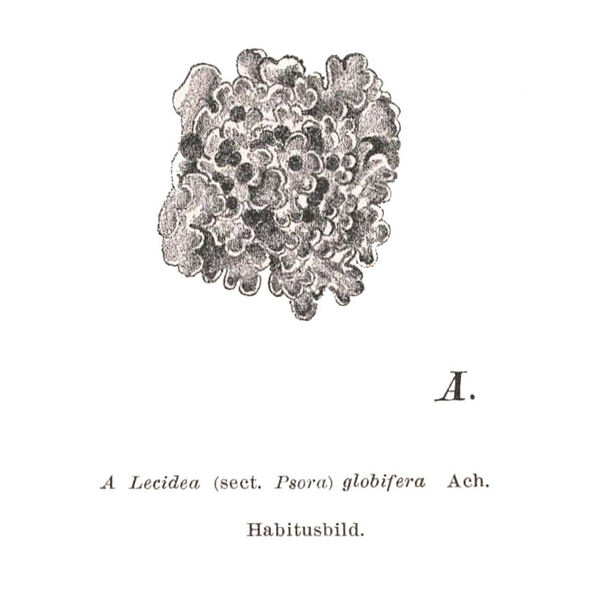Psora globifera (Ach.) A. Massal.
Ric. Auton. Lich. Crost.: 91, 1852. Basionym: Lecidea globifera Ach. - Meth. Lich.: 213, 1803.
Synonyms:
Description: Thallus squamulose, chestnut brown to dark brown, rarely faintly white-pruinose, dull to shiny, the squamules elongate, (2-)3-5 mm broad, crenate, concave to flat, finely divided by small fissures, partly imbricate, with slightly ascending, concolorous margins; lower surface greyish to brownish, attached by rhizohyphae. Upper cortex 60-120 µm thick, of thick-walled hyphae; medulla white; lower cortex of mainly periclinally arranged hyphae. Apothecia biatorine, laminal, sessile, up to 1.5(-2) mm across, with a dark brown to black, rarely faintly yellow-pruinose, strongly convex disc and a thin, paler, soon excluded proper margin. Epithecium reddish brown, containing orange crystals dissolving in K, K+ purple, N-; hymenium colourless, amyloid; paraphyses stout, strongly coherent, simple or sparingly branched and anastomosing; hypothecium pale reddish brown, with crystals of calcium oxalate. Asci 8-spored, elongate-clavate, with a thin, outer amyloid layer and a thickened tholus penetrated by a tube, the sides of which stain I/KI+ deep blue, without an ocular chamber, Porpidia-type. Ascospores 1-celled, hyaline, ellipsoid, thin-walled, 10-14 x 4-7 µm. Pycnidia dark, laminal, immersed, the wall pale. Conidia bacilliform, 6-9 x 1 µm. Photobiont chlorococcoid. Spot tests: cortex and medulla K-, C-, KC-, P-, UV-. Chemistry: thallus without lichen substances, epithecium with anthraquinones, mainly parietin.
Growth form: Squamulose
Substrata: soil, terricolous mosses, and plant debris
Photobiont: green algae other than Trentepohlia
Reproductive strategy: mainly sexual
Commonnes-rarity: (info)
Alpine belt: very rare
Subalpine belt: rather rare
Montane belt: extremely rare
Dry submediterranean belt: absent
Humid submediterranean belt: absent
Padanian area: absent
pH of the substrata:
1 2 3 4 5
Solar irradiation:
1 2 3 4 5
Aridity:
1 2 3 4 5
Eutrophication:
1 2 3 4 5
Poleotolerance:
0 1 2 3
Altitudinal distribution:
1 2 3 4 5 6
Rarity
absent
extremely rare
very rare
rare
rather rare
rather common
common
very common
extremely common
Loading data...
Occurrence data
Predictive map
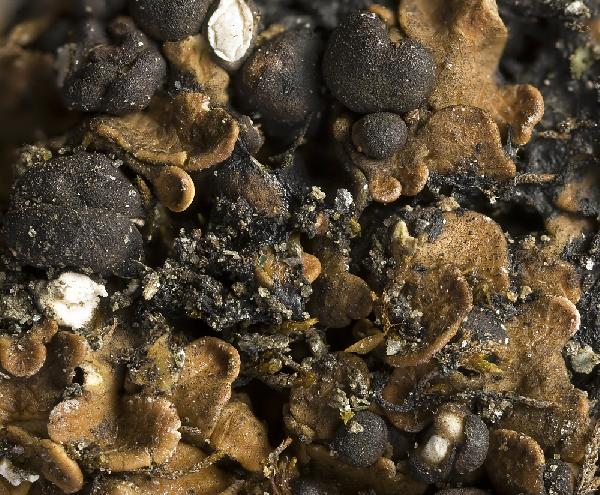
Ulrich Kirschbaum CC BY-SA 4.0 - Source: https://www.thm.de/lse/ulrich-kirschbaum/flechtenbilder
Central Europe: Germany.
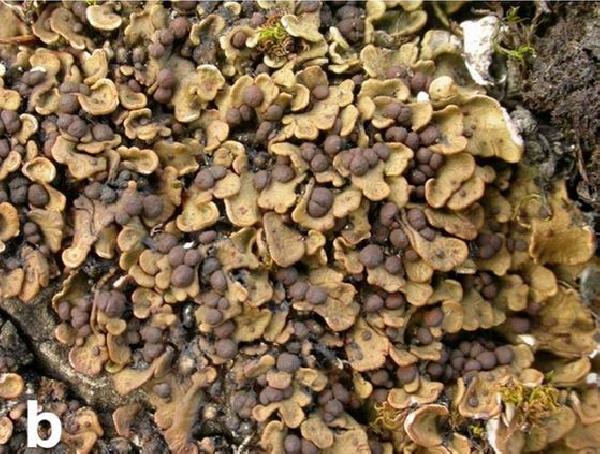
Source: Evankow, A.M., Yin, A., Zulfiqar, R. et al. Psora mediterranea (Lecanorales, Psoraceae), a new lichen species from Europe, including a new concept for P. himalayana and a revised key to the European species. Mycol Progress 24, 26 (2025). https://doi.org/10.1007/s11557-025-02045-8 - CC BY 4.0
Norway
Norway, Photo: E. Timdal
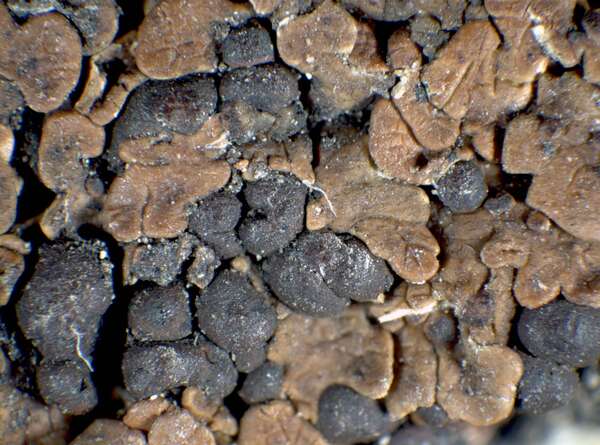
P.L. Nimis; Owner: Department of Life Sciences, University of Trieste
Herbarium: TSB (5728)
2001/11/29
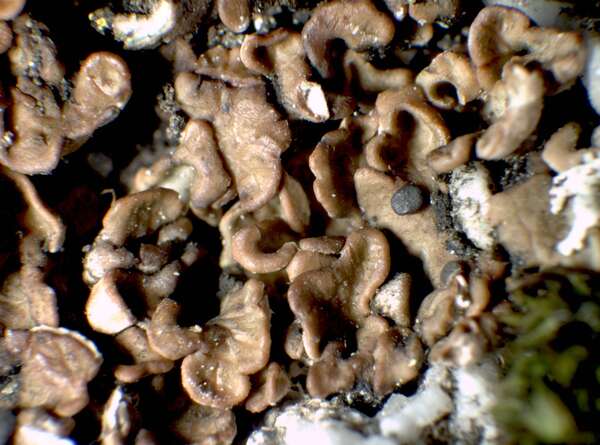
P.L. Nimis; Owner: Department of Life Sciences, University of Trieste
Herbarium: TSB (34394)
2002/01/08
Growth form: Squamulose
Substrata: soil, terricolous mosses, and plant debris
Photobiont: green algae other than Trentepohlia
Reproductive strategy: mainly sexual
Commonnes-rarity: (info)
Alpine belt: very rare
Subalpine belt: rather rare
Montane belt: extremely rare
Dry submediterranean belt: absent
Humid submediterranean belt: absent
Padanian area: absent
pH of the substrata:
| 1 | 2 | 3 | 4 | 5 |
Solar irradiation:
| 1 | 2 | 3 | 4 | 5 |
Aridity:
| 1 | 2 | 3 | 4 | 5 |
Eutrophication:
| 1 | 2 | 3 | 4 | 5 |
Poleotolerance:
| 0 | 1 | 2 | 3 |
Altitudinal distribution:
| 1 | 2 | 3 | 4 | 5 | 6 |
Rarity
absent
extremely rare
very rare
rare
rather rare
rather common
common
very common
extremely common
Loading data...
Occurrence data
Predictive map

Ulrich Kirschbaum CC BY-SA 4.0 - Source: https://www.thm.de/lse/ulrich-kirschbaum/flechtenbilder
Central Europe: Germany.

Source: Evankow, A.M., Yin, A., Zulfiqar, R. et al. Psora mediterranea (Lecanorales, Psoraceae), a new lichen species from Europe, including a new concept for P. himalayana and a revised key to the European species. Mycol Progress 24, 26 (2025). https://doi.org/10.1007/s11557-025-02045-8 - CC BY 4.0
Norway
Norway, Photo: E. Timdal

P.L. Nimis; Owner: Department of Life Sciences, University of Trieste
Herbarium: TSB (5728)
2001/11/29



